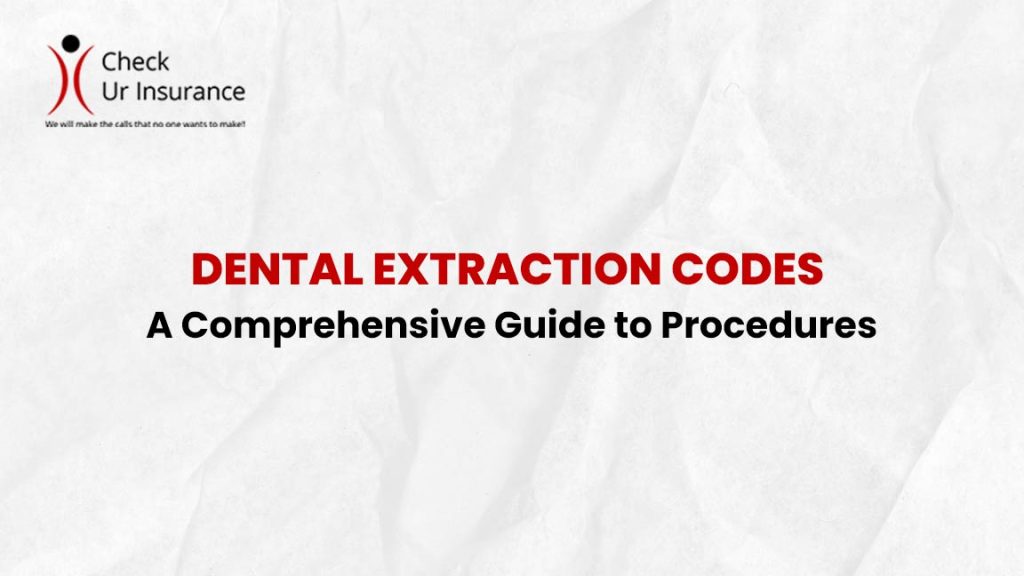Dental Extraction Codes: A Comprehensive Guide to Procedures
Dental extraction, commonly known as “tooth extraction” or “tooth pulling” involves the removal of teeth from the socket in the alveolar bone. This straightforward process addresses issues like decayed teeth, diseased gums, or trauma-related toothaches. Let’s delve into the specific dental extraction codes that professionals use for accurate documentation and billing.
Table of Contents
Dental Extraction Codes
D7111: Soft Tissue Retained Coronel Remnant
D7111 Dental Code is a procedure code that signifies the removal of a soft tissue-retained coronal remnant of a primary tooth. This code captures specific instances where soft tissue needs extraction, providing clarity in dental records.
D7140: Simple Extraction
For the extraction of an erupted (visible) tooth or one with an exposed root due to trauma or decay, professionals use the D7140 dental code. This dental procedure code covers straightforward extractions, simplifying the documentation process for visible tooth removal.
D7210: Extraction of Erupted Tooth with Bone Removal
D7210 involves the removal of an erupted tooth requiring the removal of bone and/or sectioning of the tooth. This comprehensive code includes the elevation of mucoperiosteal flaps if indicated, cutting of gingival and bone, removal of tooth structure, minor socket smoothing, and closure.
D7220: Removal of Impacted Tooth – Soft Tissue
When dealing with impacted teeth not completely erupted, the D7220 code is applied. This code specifies the removal of impacted teeth with a focus on soft tissue, streamlining the coding process for dental professionals.
D7230: Removal of Impacted Tooth – Partially Bony
For partially bony impacted teeth, the D7230 code is utilized. This code addresses the removal of impacted teeth with partial bony coverage, ensuring accurate documentation of the procedure.
D7240: Removal of Impacted Tooth – Completely Bony
In cases where impacted teeth are completely covered by bone, the D7240 code is employed. This code streamlines the billing process for the removal of impacted teeth with complete bony coverage.
D7241: Removal of Impacted Tooth – Completely Bony, with Unusual Surgical Complications
For unique cases involving unusual surgical complications with completely bony impacted teeth, the D7241 code provides a specific reference for accurate coding and documentation.
D7250: Removal of Residual/Remaining Tooth Roots
Addressing residual or remaining tooth roots, the D7250 dental code covers cutting procedures for the removal of these structures. This code ensures precise documentation of residual root extractions.
D7251: Coronectomy – Intentional Partial Tooth Removal
The D7251 code is applied for intentional partial tooth removal, known as coronectomy. This code captures the deliberate removal of part of a tooth, emphasizing the intent behind the procedure.
Note: EXTRACTIONS INCLUDE LOCAL ANESTHESIA, SUTURING, IF NEEDED, AND ROUTINE POSTOPERATIVE CARE
FAQs
Are These Dental extraction codes Universal?
Yes, these codes follow a standardized system, ensuring consistency in communication within the dental industry.
How Often Are Codes Updated?
Dental codes undergo periodic updates to align with advancements in dental practices, maintaining relevance and accuracy.
Understanding Insurance Coverage?
Insurance coverage for dental extractions varies; individuals should verify details with their insurance provider before undergoing any dental procedure.
Pain Management After Extraction?
Post-extraction pain management involves prescribed pain relievers and guidelines for a smooth recovery process.
Coding for Emergency Extractions?
Emergency extractions may require different codes for immediate attention, ensuring timely and appropriate coding.
Tips for Proper Code Documentation?
Accurate documentation is crucial for successful coding; dental professionals should diligently record details for clarity and precision.
Conclusion
This guide serves as a vital tool for unraveling the intricacies of dental extraction codes. It provides crucial insights for both professionals and patients, fostering accurate documentation, streamlined communication, and optimal oral health outcomes. Understanding these codes is not just a procedural necessity; it’s a pathway to effective dental care and successful treatment journeys.
Did you like this article? Read more helpful latest blogs.

